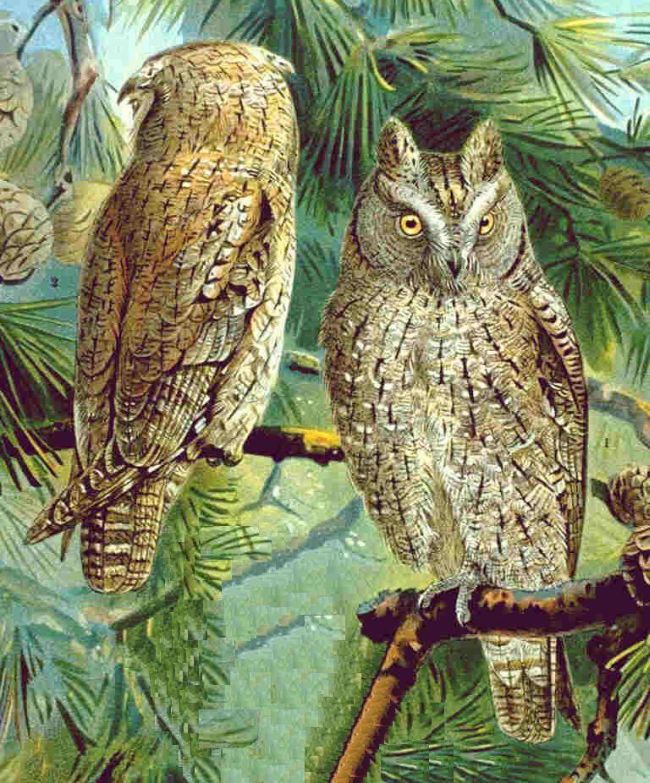- Eurasian Scops-owl
Taxobox
name = European Scops Owl
status = LC | status_system = IUCN3.1

image_width = 240px
regnum =Animal ia
phylum = Chordata
classis = Aves
ordo =Strigiformes
familia =Strigidae
genus = "Otus"
species = "O. scops"
binomial = "Otus scops"
binomial_authority = (Linnaeus,1758 )The European Scops Owl ("Otus scops"), also known as the Eurasian Scops Owl or just Scops Owl, is a small
owl . This species is a part of the larger grouping of owls known astypical owl s, Strigidae, which contains most species of owl. The other grouping is thebarn owl s, Tytonidae.This
bird breeds in southernEurope eastwards into western and centralAsia . It is migratory, wintering in southernmost Europe and sub-Sahara nAfrica . It is rare any distance north of its breeding range, usually occurring as a spring overshoot. It is unlikely that this nocturnal owl would be found outside the breeding season when it is not calling.It breeds in open woodland, parks and gardens. It lays 3-6 eggs in a tree hole. This is a small owl, and at 19-21 cm length and a 47-54 cm wingspan is not as large as the
Little Owl . It takes small prey such asinsect s and other invertebrates. It is largelynocturnal .The Scops Owl perches upright and shows small ear tufts. It is predominantly grey-brown in colour, with paler face, underparts and shoulder line. This species has a strong direct flight on long narrow wings, reflecting its migratory habits.
The call is a deep whistle given by both sexes. It is similar to the call of the
Midwife Toad .References
* Database entry includes justification for why this species is of least concern
External links
* [http://www.bsc-eoc.org/avibase/species.jsp?lang=EN&id=32D23BB189393CD4&ts=1221207931862&sec=summary Avibase] includes link to Flickr Hand Guide images.
*A photo of this owl can be found [http://www.owlpages.com/image.php?] and another one [http://www.owlpages.com/image.php?
] .
* [http://www.ibercajalav.net/img/267_ScopsOwlOscops.pdf Ageing and sexing (PDF) by Javier Blasco-Zumeta]
Wikimedia Foundation. 2010.
